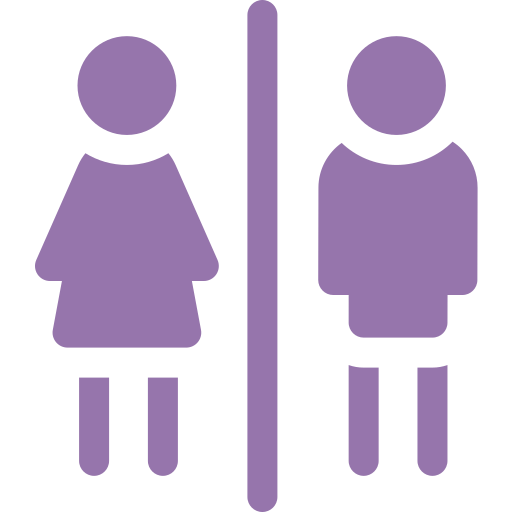There are a number of different causes of infertility that can impact a patient’s ability to get pregnant. Infertility can be caused by the male, the female or involve both partners. Below we have explained some of the more common causes of infertility in women. A separate page is dedicated to issues involving male factor infertility.
Sometimes referred to as “premature menopause”, is a loss of ovarian function in women under 40 years of age. Periods stop, estrogen is low, and the follicle-stimulating hormone (FSH) level is elevated. Some women may experience premature ovarian failure because of adrenal, pituitary, or thyroid deficiencies. Radiation therapy and anti-cancer agents may achieve a cancer cure at the cost of Fertility by causing premature ovarian failure. Women with Turner’s Syndrome, a rare genetic disorder, do not develop functional ovaries at all.
Endometriosis, is believed to be quite common. It is estimated that between 25% and 50% of women with Infertility have endometriosis. This disorder develops when fragments of the endometrial lining are implanted in other areas of the pelvis. These endometrial, or misplaced tissue implants will still respond to a woman’s monthly hormonal cycle, causing pain and discomfort, slowly increasing in number and size with each menstrual cycle and eventually causing scarring and inflammation. Endometrial implants in the ovaries or fallopian tubes are particularly likely to cause infertility, even if the endometriosis is mild.
Endometriosis-related causes of conception difficulty may include organ damage, low levels of a molecule specific to enhancing implantation, increased presence of peritoneal white blood cells, and dysfunctional immune system. Unfortunately, there exists no simple blood or urine test to detect this common affliction of the reproductive organs; the only true diagnosis is via Laparoscopy, a fortunately simple, yet still surgical, procedure.
Polycystic Ovarian Syndrome (also called Stein-Leventhal Syndrome) is a hormonal disorder that affects approximately six to ten percent of pre-menstrual women and is the major cause of infertility in American women. Polycystic Ovarian Syndrome is the result of the overproduction of hormones in a woman’s body. During ovulation, the ovaries receive hormones from the pituitary gland. These hormones, follicle-stimulating hormone (FSH)and luteinizing hormone (LH), help the egg reach maturity in preparation to be fertilized. In women with PCOS, there is an abnormal level of FSH and LH being secreted. The overproduction of LH causes the ovaries to overproduce androgens. Increased androgen production produces high LH levels and low FSH levels, so the follicles are prevented from producing a mature egg. Thus the ovulatory process is not allowed to complete itself. The partially-developed egg (inside its follicle shell) dies. Without egg production, the follicles swell with fluid and form into cysts, and it is these cysts that create polycystic ovaries. Every time an egg is trapped within the follicle, another cyst forms, so the ovary swells, sometimes reaching the size of a grapefruit. Without ovulation, progesterone is no longer produced, whereas estrogen levels remain normal.
Although Polycystic Ovarian Syndrome presents itself during adolescence or the early adult years, women often do not know they have the disorder until after they attempt to conceive. No two women affected by PCOS have the same symptoms. Common characteristics associated with PCOS are:
Pelvic Inflammatory Disease (PID) is the major cause of infertility worldwide. PID includes a variety of infections caused by different bacteria that can affect the uterus, fallopian tubes, ovaries, appendix, parts of the intestine that lie in the pelvic area, or, in the worst case, the entire pelvic area (peritonitis). The sites of infection most often implicated in Infertility are in the fallopian tubes, a condition known as Salpingitis. Although PID can be a result of non sterile abortions, use of an IUD, or a ruptured appendix, most infections are caused by sexually transmitted diseases. Chlamydia Trachomatis is an infectious organism that causes 75% of Salpingitis cases. A small US study suggests that Chlamydial infection of the upper genital tract, even without severe inflammation, may cause a higher proportion of fallopian ectopic pregnancies than previously thought. Gonorrhea is responsible for most of the remaining cases. Severe or frequent attacks of PID can eventually cause scarring, abscess formation, and tubal damage that result in Infertility. The severity of the infection, not the number of the infections, appears to pose the greater risk for Infertility. About 20% of women who develop symptomatic PID become infertile. PID also significantly increases the risk of ectopic pregnancy.
Given the intricate interaction of the hormones necessary for ovulation, it is not surprising that about 33% of Infertility cases can be traced back to ovulation and hormonal problems. They may result in the failure of the ovarian follicle to rupture, an empty follicle, or entrapment of the egg so that it isn’t released. Various medical conditions, as well as lifestyle factors such as excessive exercise, eating disorders, smoking, or stress can change normal hormonal rhythm. Even slight irregularities in the hormonal system can result in ovulation disorder.
Benign fibroid tumors in the uterus are extremely common in women over 30. In rare cases, they can cause Infertility by interfering with the uterine cavity, blocking the fallopian tubes, or altering the position of the cervix and preventing sperm from reaching the uterus. High levels of estrogen seem to stimulate the growth of fibroid tumors; heredity may also play a role in their development.
Coastal Fertility is located in Irvine, California, in the heart of Orange County. Patients visit our Southern California fertility clinic from all over the world for fertility treatments at the hands of our renowned infertility doctors. With several international airports nearby, Coastal Fertility is easily accessible from locations worldwide.
Our fertility specialists have expertise in IVF, ICSI PGD, PGS, PCOS, gender selection, surrogacy, egg donation, tubal reversals and more. Local patients are invited to a free monthly IVF Seminar at our California fertility center near Newport Beach, San Bernardino, Riverside, Oceanside, Corona, Santa Ana, Anaheim, Lake Forest, Mission Viejo and many other Southern California communities.
Coastal Fertility Medical Center
15500 Sand Canyon Avenue
Suite 100, Irvine, CA 92618
Thanks for Joining!
We will be sending new updates soon.
Your new patient forms have been submitted and received. We look forward to seeing you at your appointment.
Please complete the form so we can best serve and help you with your journey towards parenthood.
Following the Preimplantation Genetic Screening process, which helps ensure there are normal chromosome numbers and detects possible genetic disorders, the most healthy embryo(s) are selected to be implanted into your or your chosen surrogate’s womb. 2 weeks after the transfer of the embryo, your physician will conduct a final blood test to determine the level of hCG (human chorionic gonadotropin) in your body. Increased hCG levels usually indicate a positive pregnancy test.

For fertilization to take place, the collected egg and sperm are combined in a petri dish and cultured in an embryo incubator. This dish is closely watched to check whether any of the eggs have been fertilized. Once the egg is fertilized, it is referred to as an embryo or a blastocyst on the 5th day of development. Our in-house embryologist carefully nurtures every embryo to the right time, even if it means working outside the standard business operating hours. For instance: If an oocyte is not mature, our laboratory will wait for it to mature and then ICSI it at the right time.

The egg retrieval is a slightly invasive medical procedure that takes about 20 to 30 minutes. You will be given an anesthetic to make you sleep for the duration of the procedure. Using ultrasound technology, your doctor will harvest your eggs transvaginally with a small, hollow needle connected to an ultrasound probe. Once your eggs are collected, your partner’s semen or donor sperm you have pre-selected is used for fertilization. The sperm are washed and prepared, and the top-quality sperm extracted is used to fertilize the eggs.

Your doctor will create a customized medication schedule that contains information about the fertility medications and hormone injections you have to take. Medication and injections are taken to encourage your ovaries to mature a large number of eggs for fertilization. Since women don’t respond to fertility drugs and hormones the same way, personalized protocols are crucial to the IVF cycle success. At Coastal Fertility, we will monitor you closely, letting you understand the changes occurring in your body and keeping track of how your egg follicles are growing.

The infertility industry is currently segmented, with each service or treatment being handled by a different provider. Our all-inclusive model simplifies an otherwise complex and difficult process. We are here to revolutionize the infertility industry by offering a one-stop-service model to assist our patients through infertility challenges while reducing physical, emotional, and financial risks.

Coastal Fertility Medical Center offers one of the most advanced fertility treatments and is completely transparent regarding the costs of procedures and any other expenses that you may have to pay before commencing your treatment. This differentiates us from some fertility clinics that reduce prices before the signing of the contract but charge you extra later on. We make sure our patients are well aware of any possible extra pricing that may occur over the course of their treatment.

Our fertility clinic focuses on helping you build your family regardless of your sexual orientation or the gender you choose to identify with. We are even taking further steps to make LGTB people feel more welcome at our fertility clinic. Each of our patient-facing staff goes through LGTB training to let family-building clinicians provide necessary support and make you feel highly welcome.

Our globally respected team of specialists are helping improve IVF technologies to enter into a generation of better outcomes for infertility. Although you’ll have a doctor guiding you, you are also going to benefit from the experience and insights of other doctors during case review collaboration meetings, which take place every week. So, you won’t just rely on the expertise of a specialist but benefit from the knowledge of many reputed fertility experts.

We know that every situation is different and that everyone requires different treatments. Unlike facilities that take “a one-size-fits-all” approach for all cases, our fertility specialists use more than 40 customized protocols to raise the chances of success. The customized approach even extends to our fertility laboratory. Our on-site lab director and his highly-experienced team nurture every embryo and egg to increase the odds of success of each cycle.

Our team specializes in difficult cases and help patients who may have been considered “hopeless” at other fertility clinics. Thanks to our personalized solutions, expertise, and internal collaboration, weare able to maximize pregnancy success rates that are well above the industry average, even in difficult infertility cases.

Your Reproductive Endocrinologist will take all factors into consideration and create a comprehensive plan of care, otherwise known as the treatment plan. This plan will include treatment recommendations from the physician and enable your financial coordinator to make a precise quotation once you meet.

On-site consultations typicallyinclude a standard fertility evaluation, consisting of a physical examination, complementary follicular ultrasound, and testing to enable your doctor to know your present fertility status and draw up a treatment plan.

This consultation includes a detailed medical evaluation with a doctor. You and your physician will review your health records and have enough time to talk about your goals and get answers to your questions. We recommend that you jot down all your questions before the visit to allow you to make the best use of the time spent with your doctor.

Upon your arrival, you will check in with a Patient Care Coordinator. We will obtain your insurance information for benefits verification, a copy of your identification and take a picture for your electronic medical chart
